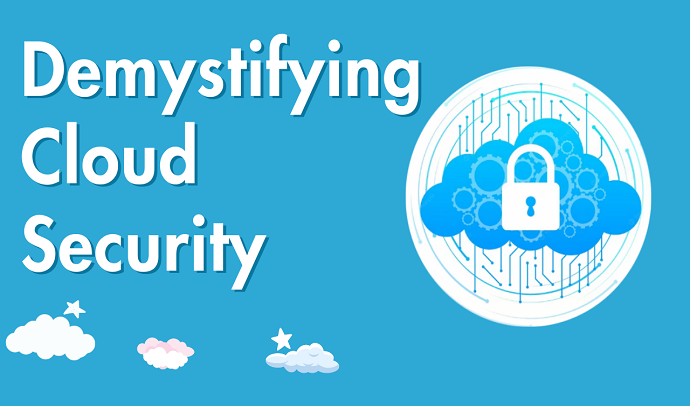Download PDF
Introduction
 The widespread adoption of cloud computing has revolutionized the way businesses operate. Cloud services offer unparalleled flexibility, scalability, and cost-efficiency, making them an attractive choice for organizations of all sizes. However, as businesses move critical data and applications to the cloud, concerns about security and data protection have become paramount. Demystifying cloud security is essential to enable organizations to make informed decisions and ensure their sensitive data remains safe from potential threats.
The widespread adoption of cloud computing has revolutionized the way businesses operate. Cloud services offer unparalleled flexibility, scalability, and cost-efficiency, making them an attractive choice for organizations of all sizes. However, as businesses move critical data and applications to the cloud, concerns about security and data protection have become paramount. Demystifying cloud security is essential to enable organizations to make informed decisions and ensure their sensitive data remains safe from potential threats.
Understanding Cloud Security
Cloud security encompasses a set of practices, technologies, and policies designed to protect data, applications, and infrastructure hosted in the cloud. While cloud service providers implement robust security measures, the shared responsibility model dictates that customers are also accountable for securing their data and applications within the cloud environment.
The major cloud service providers invest heavily in state-of-the-art security infrastructure, including encryption, firewalls, and multi-factor authentication. They also undergo rigorous security audits to comply with industry standards and regulations. However, it’s vital for businesses to understand their role in securing their data and implementing additional security layers as needed.
Key Steps to Ensure Data Protection in the Cloud
- Comprehensive Access Controls: Implement granular access controls to restrict data access based on the principle of least privilege. This ensures that only authorized personnel can access sensitive data and perform specific actions.
- Data Encryption: Encrypt data both in transit and at rest to safeguard it from unauthorized access. Encryption ensures that even if data is intercepted or stolen, it remains indecipherable without the encryption keys.
- Regular Data Backups: Regularly back up critical data to ensure data availability and recovery in case of accidental deletion, data corruption, or cyberattacks.
- Security Monitoring & Incident Response: Employ robust monitoring tools to detect suspicious activities and potential security breaches. Establish an incident response plan to promptly address & mitigate any security incidents.
- Employee Training and Awareness: Educate employees about best security practices, such as recognizing phishing attempts, using strong passwords, and safeguarding sensitive information.
- Compliance with Regulations: Ensure that your cloud provider complies with relevant data protection and privacy regulations specific to your industry and region.
- Regular Security Audits & Assessments: Conduct periodic security audits and assessments to identify vulnerabilities and weaknesses in your cloud environment.
Leveraging CloudOpty for Informed Cloud Security Decisions
With the complexities of cloud security, businesses may need additional resources to make informed decisions and ensure the highest level of data protection. This is where “CloudOpty” comes into play. CloudOpty is a reliable platform that offers valuable insights and comparisons of various cloud service providers, their security features, and data protection measures.
By utilizing CloudOpty‘s services, businesses can gain a better understanding of the security capabilities of different cloud providers. This empowers organizations to select the most appropriate cloud service provider that aligns with their security requirements and complements their internal security practices.
Conclusion:
In conclusion, cloud security is a shared responsibility between cloud service providers and their customers. By implementing best security practices, leveraging advanced security features, and staying informed about the latest security threats, businesses can ensure robust data protection in the cloud. For comprehensive and reliable insights into cloud service providers’ security offerings, CloudOpty serves as a valuable resource, aiding organizations in making well-informed decisions to safeguard their sensitive data and applications effectively.
